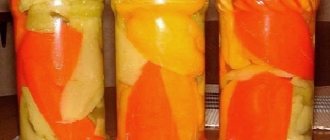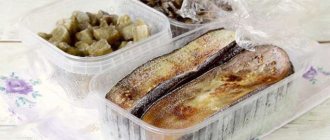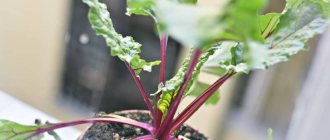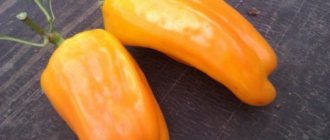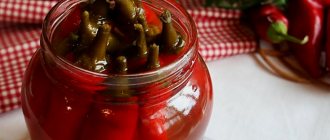Bell pepper is a unique vegetable characterized by its sweet taste, crispy flesh and beautiful appearance. Yellow, red, green or orange fruits can decorate any dish, diversify the menu as much as possible and saturate the body with vitamins A, C, P, group B, mineral salts of calcium, sodium, phosphorus, magnesium, chlorine, iron.
Thanks to this, the product will help normalize the functioning of the nervous system, improve memory and make a slim figure. But in order to preserve not only the benefits, but also the beautiful appearance of the pepper, you need to know how to properly freeze the vegetable for the winter in the freezer.
How to prepare peppers for freezing
The process of preparing peppers for freezing includes several stages:
- Wash the vegetables thoroughly under running water.
- Using a sharp knife, cut out the core and remove all the seeds and veins inside the pods. If you leave the light parts of the pepper, then the dish prepared from such a vegetable will be bitter.
- Once again we wash the pods to remove any remaining seeds and cut fibers.
- Dry the peppers with a paper towel or cotton cloth. Dry vegetables will retain their shape better when frozen, and the freezing itself will be crumbly.
Selection and preparation of vegetables before starting the process
For harvesting, it is necessary to select ripe, fresh fruits, without visible damage. Both sweet and hot peppers will do. Cut off dented and damaged parts. Juicy and thick-skinned specimens are suitable for freezing, because they contain a maximum of useful substances.
Priority is given to fruits that are grown on your own plot. Vegetables from the supermarket are treated with chemicals for long-term preservation. If there are none, then vegetables are purchased at the market. It is important to ask the seller where they were collected. To be sure, check the fruits with a dosimeter.
Selected vegetables are thoroughly washed under running water. It is better to wash each specimen separately, paying attention to the area near the tails, where the greatest amount of dirt accumulates.
Next comes the cleaning process. Depending on the freezing method, cleaning takes place. If the peppers will be frozen in pieces, then cut each fruit in half and remove the tail, partitions and seeds.
To better remove seeds, you can rinse the pieces in water.
Place cut sides down on a towel and let drain and dry. The procedure takes more than an hour.
Next, you need to cut into pieces of the desired size.
After preparation, the freezing process itself begins. Place a towel or napkin in the freezer and pour out in one layer. Cover the top with another napkin to protect from warm air that enters when the chamber is opened.
If you freeze them whole, then it is better to stack them one on one, from largest to smallest. Keep in the freezer for two days. If there is a quick freeze function, you can do less.
You can preserve hot and green peppers in a similar way.
Selection of containers for storing pepper preparations
There are many ways to freeze bell peppers for the winter, whole or chopped, but fresh; each may require a different storage container. But it cannot be stored without packaging, since while it is inside the freezer it will absorb all foreign odors, which will accordingly affect the taste and smell of the pepper. The freshness of the product will disappear.
- The container is plastic so that the lid closes tightly (this option is suitable if there is a lot of space inside the freezer or you are going to save a small part);
- A bag made of thick polyethylene;
- Cellophane bags;
- Bags with Zip closure;
- Plastic tray.
A ziplock bag is a good option. It will prevent the exchange of odors with other products in the freezer. It is convenient to first freeze the pepper preparations on a plastic tray so that they do not stick together, and then place them in a more convenient container.
Four ways to freeze sweet peppers
Method one - freezing whole bell peppers
This method of freezing peppers is probably the easiest. Prepared whole peppers just need to be stacked on top of each other, forming a “pyramid”. To prevent the peppers from sticking together, each pod must be wrapped in a small piece of cellophane. To do this, you can cut the packaging bag into several pieces, approximately 10 centimeters in size on each side. The pepper pyramid is placed in a freezing bag, all the air is removed from it as much as possible, and placed in the freezer for storage. Peppers, frozen whole, are later used for stuffing.
Method two - freezing peppers into cubes or strips
This freezing method will also not cause you any difficulty. The peeled, washed and dried pepper is first cut in half lengthwise, then each half is cut lengthwise again. Now you need to cut the resulting pepper slices crosswise into thin strips or cubes. The size and shape of the cut depends on what you plan to make from this pepper in the future. For pizza and soups, for example, it is more convenient to use peppers cut into strips, but for vegetable stews - into cubes. The crushed peppers are placed in a freezer bag and placed in the freezer. After a couple of hours, you can shake the bags so that the slightly frozen vegetables come unglued, and the frozen vegetables are ultimately crumbly.
Method three - freezing baked sweet peppers
With this method, the peppers are first baked in the oven. To do this, the pods are washed without removing the stalk with seeds. The peppers are placed on a baking sheet greased with vegetable oil and placed in the oven for about 40 minutes. As soon as the vegetables are browned, take them out, put them in a saucepan and cover tightly with a lid for 15 minutes. After this, holding the pods by the stalk, remove the skin, and then remove all the insides. These peppers are surprisingly aromatic and tasty, so when peeling the peppers, you must try to preserve the juice that will be released from them. Next, the peeled peppers are cut into small pieces, placed in containers, and poured with the resulting juice. The workpiece is stored in a freezer. These frozen peppers are ideal for salads.
Method four - freezing stuffed peppers
This method is used to freeze peppers already stuffed with minced meat. At the same time, peppers can be stuffed either “raw” or previously blanched in boiling water (about 1 minute). Blanching makes the vegetable softer, which allows it to be filled more densely with minced meat. Ready stuffed peppers are frozen in the freezer on a flat surface for 24 hours. Then they are transferred to freezer bags and stored in the freezer for long-term storage.
The best ways to freeze peppers at home
Bell peppers can be frozen in several ways; they are chosen depending on the subsequent use of the product and personal preferences.
Whole in the freezer
After thoroughly washing and drying the fruit, bell peppers are frozen whole. This will allow you to stuff them later. For fresh vegetables, you will need to cut off the stem and remove the seeds from the fruit. Next, they are laid out in one layer on a cutting board, wrapped in cling film and placed in the freezer compartment of the refrigerator for 3-6 hours.
Next, the fruits are stacked one on top, separating the peppers with cellophane, or all the vegetables are sent to a common container for further storage.
In halves
When preparing bell peppers, you can freeze them in halves. The advantage of this method is that fruits prepared in this way will take up much less space in the freezer.
After washing, removing seeds and stalks, the fruits are cut in half lengthwise, then the halves of the vegetables are placed in small zip bags, or tightly tied in ordinary plastic bags. When distributing the fruit, it is necessary to determine the exact number of pepper halves that will be used at one time. The fruits sorted in this way are put into the freezer.
Pieces
Bell peppers can be prepared in pieces, rings, cubes or strips for preparing different types of dishes:
- For stews, soups and gravies, vegetables are cut into cubes.
- For pizza and pies, vegetables are cut into strips or wheels.
To remove excess moisture (vegetable juice released when cutting fruits), the sliced product is dried with paper napkins or towels before freezing. Next, the vegetables are placed in plastic bags, after releasing the air from there, or in plastic, hermetically sealed containers.
Assorted for stew
Sweet peppers are frozen as part of assorted vegetables. The most popular types of assorted vegetables that are frozen are:
- Paprikash. The assortment consists of finely chopped peppers mixed with chopped zucchini, tomatoes and beans in pods.
- Country mix. The assortment consists of finely diced potatoes, peppers, beans in pods, carrots, onions, and corn. Broccoli is also added to this mixture. The vegetable is first blanched before adding to the assortment.
- Lecho: cubes of blanched peppers, onions, tomatoes, zucchini.
- Dressing for borscht: the mixture includes finely chopped peppers, tomatoes, and beets. Onions and carrots are also added here.
- Hawaiian mixture: semi-cooked rice, pepper slices, corn and peas.
Is it possible to freeze bell peppers for the winter?
Freezing food is perhaps the most useful type of preservation. Vegetables and fruits in the freezer not only do not spoil, but also retain the maximum amount of useful vitamins and microelements.
In addition, it is convenient - preparing the vegetable, container and freezer takes much less time compared to rolling the peppers into glass jars and drying the vegetable.
Attention! Of course, frozen peppers can be purchased in the store or, if desired, in the cold season you can find fresh vegetables in the supermarket. When purchasing frozen vegetables, there is a risk of purchasing a product that can be frozen many times. In addition, it is not entirely known whether the peppers were frozen fresh or were already starting to deteriorate?
Buying a fresh fruit may not always live up to expectations: instead of a fragrant, beautiful and fresh vegetable, you can buy a withered pepper at a high cost.
How to defrost vegetables correctly
The best option is to defrost at room temperature, naturally. Boiling water should not be used, as a temperature difference will occur and you will damage both the taste and appearance, this applies to whole frozen or stuffed sweet peppers.
If you use pieces of vegetables for soups and stews, you don’t have to wait for them to defrost at all, but start cooking immediately, 15 minutes before the dish is ready.
Temperature for freezing peppers and shelf life
In order for frozen peppers to retain the maximum amount of vitamins and beneficial microelements, the freezing temperature should not exceed -18 – 20 degrees Celsius. If the temperature becomes higher, the product will be stored for less time.
Depending on the type of frozen product, shelf life differs:
- Fresh frozen peppers can be stored for up to 12 months.
- Roasted or blanched vegetables can be stored for up to 6 months.
- Stuffed peppers can be stored for up to 7 months.
Attention! Before freezing, containers and bags of vegetables are labeled. Indicate the approximate shelf life and freezing date.




